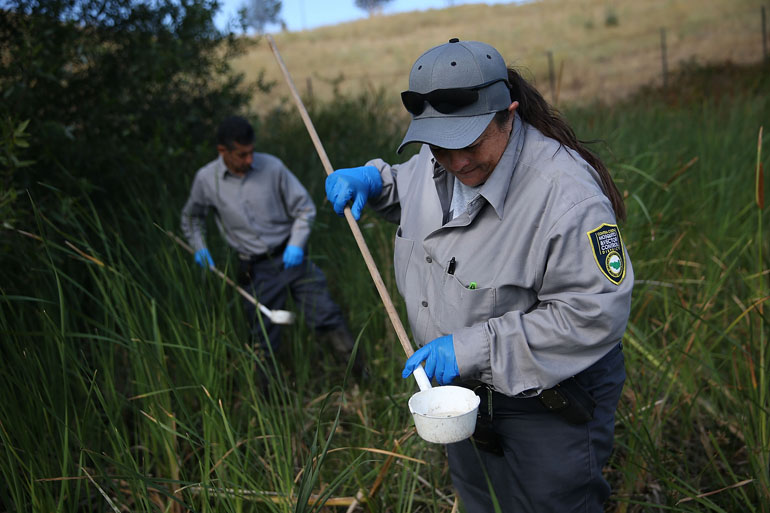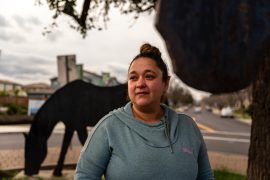West Nile virus hit California harder than ever last year, with a record 561 cases of neuroinvasive disease — the most serious types of the illness — reported from the mosquito-borne virus, according to federal health data released Thursday.
The number of these serious California cases was 83 percent higher than the previous record number reported in the state in 2005, according to the U.S. Centers for Disease Control and Prevention.
Most of those cases — 70 percent — were reported from Los Angeles and Orange counties, which recorded 15 West Nile deaths last year. Statewide, 31 people died of West Nile disease in 2014.
The West Nile virus is spread by the bite of an infected mosquito. Mosquitoes can become infected when they feed on birds carrying the virus. Most people infected will have no symptoms, but about one in five will develop a fever with other symptoms. Even fewer people will develop the serious neuroinvasive disease tracked by the CDC, including West Nile-caused meningitis and encephalitis, but most of them will require hospitalization.
Public health experts say there’s no single explanation for why some West Nile virus seasons are more severe than others.
California’s drought, last year’s particularly warm summer temperatures, and changes in bird and mosquito populations all played a role in making the 2014 West Nile virus season one of the state’s worst, said Dr. Rachel Civen, medical epidemiologist in charge of vector-borne diseases for the Los Angeles County Public Health Department. The drought reduces water available for birds and mosquitoes, which then crowd together among remaining water sources, spreading the virus.
Civen noted that while the new CDC data focus on neuroinvasive cases, local public health agencies, including hers, report all West Nile virus infections, including people without symptoms whose infection is detected when they donate blood.
In that respect, “we’re actually seeing a lot fewer cases” this year, Civen said. This week, Los Angeles County will report 10 infections, six of which were detected in asymptomatic blood donors. Last year in the same week, 49 infections were reported.
Statewide, 83 human cases of West Nile virus have been reported this year, according to the California Department of Public Health. Two people, from San Bernardino and Nevada counties, have died from the disease.
In Orange County, which had California’s highest number of infections in 2014, environmental health officials next week will start a large-scale aerial spraying campaign to control mosquitos. This will be the first aerial spraying campaign for the county, which in the past instead has “fogged” smaller areas with insecticide. The spraying campaign on Sept. 9 and 10 will cover the cities of Orange, Tustin and Villa Park, and parts of Anaheim, Fountain Valley, Garden Grove, Santa Ana and Stanton.
As of last week, five people in Orange County had been infected with West Nile virus, according to the county’s public health department.
West Nile virus emerged in the United States in 1999 and was first reported in California in 2002. By 2004, the virus was reported in all of the state’s 58 counties.
More information is available on the CDC’s website.







